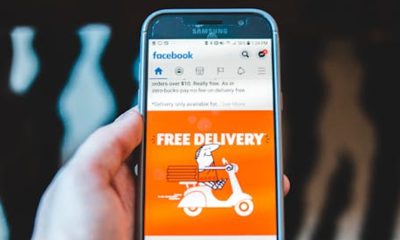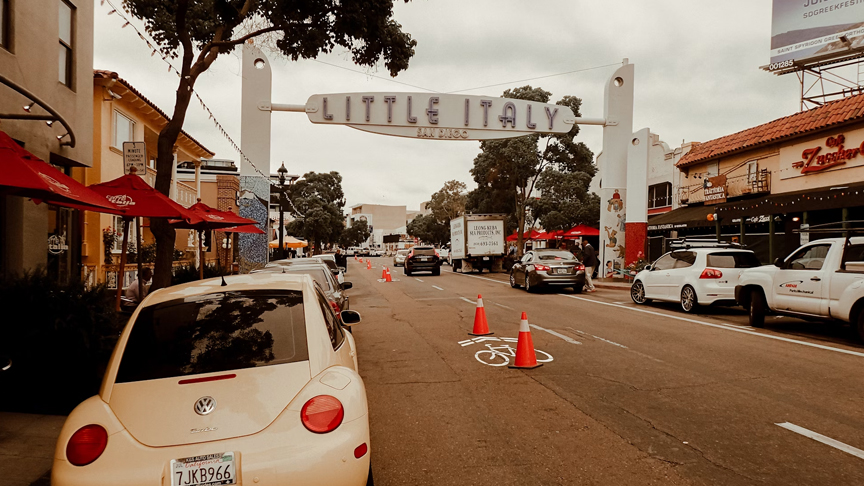Charities seeking opportunities for growth have experienced a recent surge in online giving, growing by 42 percent since 2019, according to the most recent Charitable Giving Report from the Blackbaud Institute.
Mobile giving, in particular, has gained popularity, with 28 percent of all online contributions coming from smartphones in 2021 — a percentage that has more than tripled since 2014.
Not all online giving is equal, however. New research from the University of Notre Dame reveals a “mobile giving gap,” which demonstrates that consumers are less likely to donate to charities when using smartphones than when using PCs.
“The mobile giving gap: The negative impact of smartphones on donation behavior,” recently published online by the Journal of Consumer Psychology, was authored by Kristen Ferguson, assistant professor of marketing at Notre Dame’s Mendoza College of Business, along with Stefan Hock and Kelly Herd from the University of Connecticut.
Charities have long recognized the benefits of appealing to consumers in a variety of ways, including door-to-door, direct mailers, personal phone calls and, more recently, through virtual reality. Because of the major differences in these methods, charities often adapt their appeals to align with the solicitation style.
The study shows the need to further fine-tune their strategies.
“Although charities are willing to adapt their appeals to these different channels, they have not yet recognized the importance of adapting their online appeals across device types,” Ferguson said.
Organizations typically use identical appeals across device types, according to a review of the donation pages of the Forbes Top 100 Charities.
Previous research identified a “mobile mindset,” recognizing that consumers process information and behave differently on their smartphones than when on their laptops or desktop computers.
This study looks more closely at this phenomenon, in part through a collaboration with German charity Aktion Deutschland Hilft, an alliance of German humanitarian aid agencies.
“Our research describes critical attributes of a mobile mindset, in which consumers are more self-focused and less ‘other-focused’ on their smartphones than on their PCs,” Ferguson said. “This is because they constantly have their smartphones with them and view the devices as a part of the self, so are more likely to think about themselves rather than others when using them.”
Donating requires people to focus on and empathize with others, but that can be sabotaged by smartphones inducing self-focus.
“Charities would be best served by working to induce other-focus for smartphone users,” Ferguson said. “Specifically, those appeals would highlight the fact that the main beneficiary of support is another individual or group.”
An ad highlighting others may specify that the donor can “help those less fortunate,” “help make the community a better place for everyone” or “imagine how your donation will enhance the lives of those affected by cancer.”
“When donation appeals explicitly highlight the needs of others, people using smartphones will become less focused on their own and more conscious of others’ needs, which will dissipate the mobile giving gap,” Ferguson said.
Companies, including many nonprofits, spend more than $224 billion annually on Google Ads, according to Statista. In fact, highlighting the value of this platform for nonprofits, Google Ads offers eligible nonprofits $120,000 of free Google ads per year. Since 2003, the Google Ads Grants program has provided $10 billion in free advertising to more than 115,000 nonprofits across 51 countries, according to Nonprofits Source.
Charities can better leverage this opportunity by developing ads that directly target consumers on either smartphones or PCs.
Although mobile giving may appear to be on the rise, the uptick is likely driven by increases in overall smartphone ownership, the researchers said. This study suggests charities are leaving money on the table by using a one-size-fits-all strategy for all forms of online giving.
“Charities see value in measuring mobile giving as a separate category of online giving, but they still don’t see the importance of adapting their donation appeals across device types,” Ferguson said. “Our work shows why and how to change that.”


 BizNews4 weeks ago
BizNews4 weeks ago
 BizNews4 weeks ago
BizNews4 weeks ago
 BizNews4 weeks ago
BizNews4 weeks ago
 BizNews4 weeks ago
BizNews4 weeks ago
 BizListing4 weeks ago
BizListing4 weeks ago
 BizNews4 weeks ago
BizNews4 weeks ago
 BizNews4 weeks ago
BizNews4 weeks ago
 BizListing3 weeks ago
BizListing3 weeks ago













